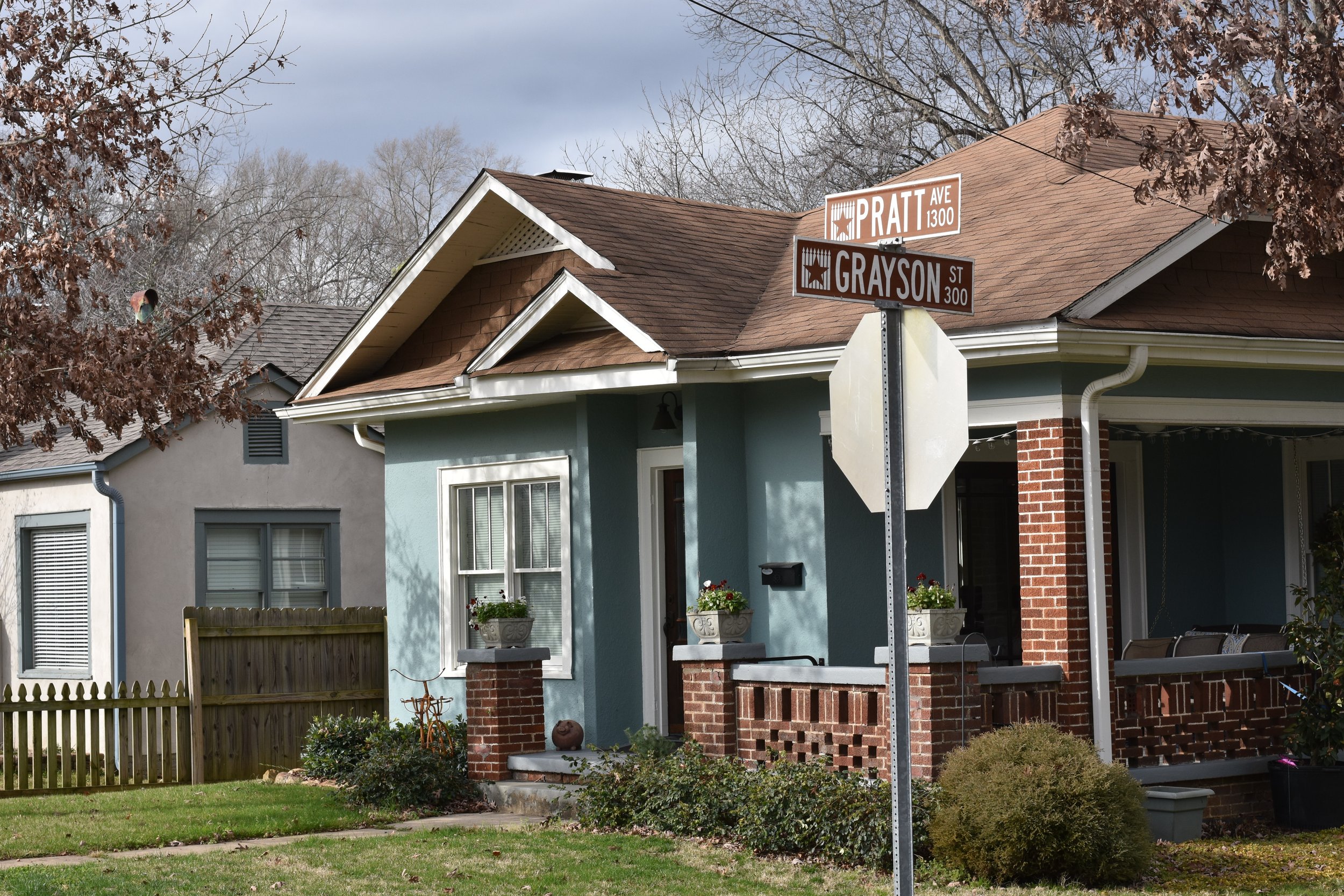
Becoming Historic
Image by Carole Foret
Change is essential for growth, but change that disregards history fails to preserve the architectural cohesion of a well planned community.
A possible Five Points Historic District was seriously considered in 1982 when the Historic Huntsville Foundation sponsored a meeting with area residents to assess whether there was sufficient interest on the part of owners to pursue the process.
Some bungalows demonstrate Arts and Crafts details while a few homes revived the English Cottage tradition with a few distinctive details focused on entryways and chimneys. The desire to maintain these architectural details was a significant driver behind the desire to create our historic district.
The area targeted extended from Oakwood Avenue to Maple Hill cemetery and from Maysville Road to Andrew Jackson Way. Petitions were circulated, but the scope was too large and was unworkable--in part due to large numbers of absentee landowners. Later the target area was reduced to south of McCullough, and work began again. The requisite number of petitions was still unobtainable.
The bungalow is primarily identified by a low, quiet roofline, stick brackets under the eaves, broad front porches, and one or one-and-a-half stories with front dormers.
Although The Five Points Historic Preservation District does not cover all of the area known as Five Points, nor the entire East Huntsville Addition, it does encompass prime examples of vernacular domestic architecture from the late 1890's through the 21st century. When walking its streets, one can see how tastes have changed and evolved over time while fitting into the Victorian framework that initially formed its character.
Five committed neighbors joined together to make our historic designation a reality.
Our neighborhood illustrates the evolution of middle-class housing in 20th century Huntsville. These dwellings range from modest one and two-story vernacular Victorian homes displaying a minimum of decorative woodwork to an endless variety of bungalows that experienced great popularity in the 1920's.
The quest lay dormant until 1994 when the city again received inquires about the procedure from several homeowners. This time they succeeded in securing the necessary support, but only by restricting the boundaries to a smaller area where interest was concentrated. The hope was that if a smaller district could be established, then adjoining blocks might later be encouraged to join the district by following the same procedure.
The district that ran from Ward Avenue to Wells and Eustis Avenues and from Russell Street to Minor Street. The following year it was expanded by the addition of five more blocks to the East and Grayson Street is now the boundary.
If you’re interested in learning more about the beginnings of our neighborhood, this 1983 article from The Huntsville Historic Quarterly of Local Architecture and Preservation is a fascinating resource.






